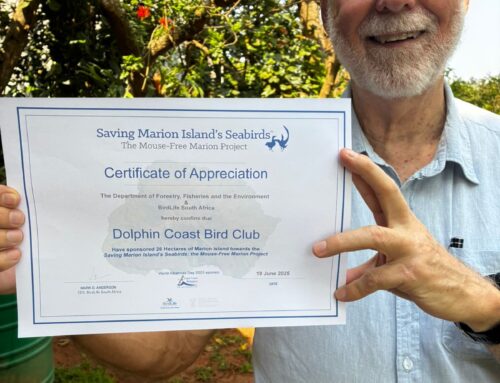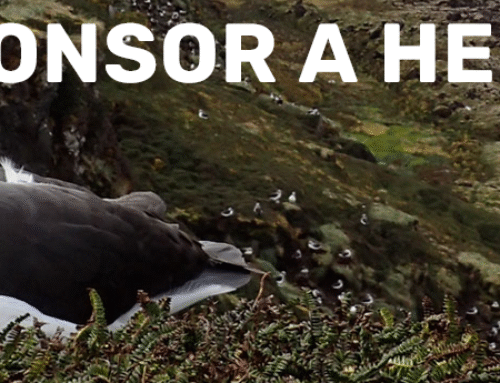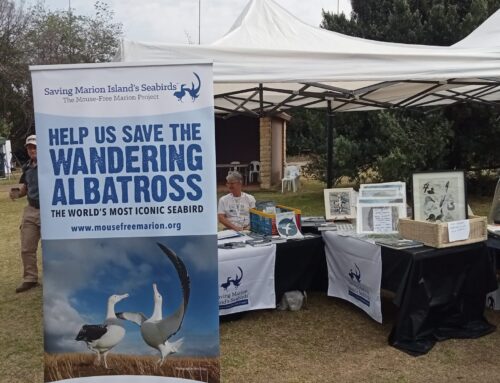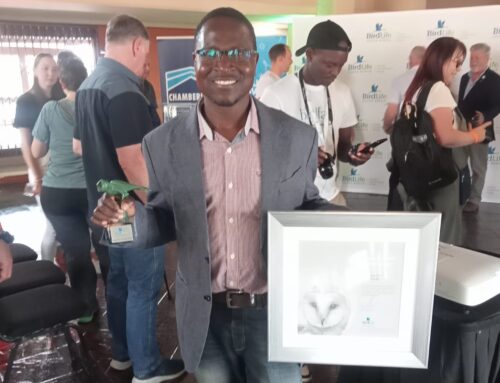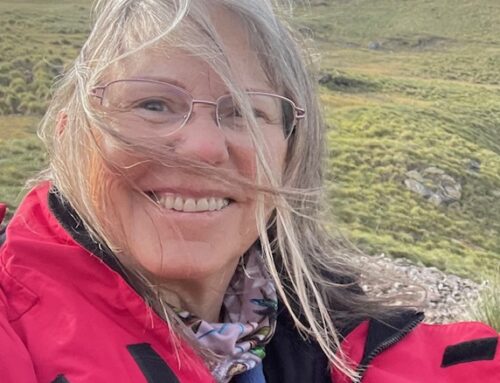Above picture: An invasive House Mouse on Marion Island, photograph by Ben Dilley
This post continues an occasional series that features scientific papers, theses and reports that give information related to attacks by House Mice on the birds of Marion Island. For the first post in the series click here.
In 2011 Andrea Angel and John Cooper (then of CORE Initiatives) reviewed the impacts of House Mice Mus musculus on Marion Island’s biota and environment for the then Prince Edward Islands Management Committee of the South African National Antarctic Programme. Although the review has not been updated it serves to define the situation on the island at the time of writing, and thus helps inform the Mouse-Free Marion Project as it works towards eradicating the island’s mice.
The review’s summary follows:
“The policy on control of introduced plants and animals as set out in the current management plan for the Prince Edward Islands (PEIMPWG 1996, p. 48) states that:
“The control of introduced plants and animals aims to eradicate alien plants and animals as far as possible on the Islands (where this can be achieved without undue disturbance or damage to indigenous taxa or natural features).”
This review addresses a sub-objective of the above policy:
“To elucidate the ecological impacts arising from the introduction of the House Mouse Mus musculus population to Marion Island, and to make recommendations for its control”.
The Prince Edward Islands are a sanctuary for breeding seabirds in the Southern Ocean where the populations of 29 seabird species breed, totalling close to 2.5 million birds. The islands are an invaluable reservoir for plants and invertebrates endemic to the Kerguelen Biogeographical Province. With over 40 years of continuous scientific research they provide an unparalleled understanding of Southern Ocean island ecosystems, particularly in today’s context of climate change. Following the eradication of feral cats Felis catus in the early 1990s, responsible for the death of hundreds of thousands of burrowing petrels, the House Mouse Mus musculus has become one of the most significant conservation concerns on the island. Numerous studies have documented the significant impact that House Mice have on seeds, plants and invertebrates, causing significant changes to species distributions, densities and species composition. Some of these impacts are likely to result in the extinction of impacted taxa and irreversible effects on ecosystem functioning by threatening the delicate balance between peat accumulation and decay that govern the island’s vegetation succession. Mice may also be having an indirect impact on the populations of Lesser Sheathbills Chionis minor by competing for food. Finally, an alarming discovery is recent evidence that mice are preying upon albatross chicks of at least two species, already in jeopardy due to high adult mortality at sea. The former added to the existing record of a burrowing petrel chick found with wounds probably inflicted by mice exposes the risk that the remaining burrowing petrels, still recovering from recent cat predation, may now be facing on Marion Island. The impacts of mice on Marion Island are a striking example of how insidious the effects of the House Mouse can be when it preys upon species that are poorly represented, such as invertebrates and plants, or large charismatic fauna, such as the many seabird species, which together are part of the island’s closely knit ecosystem. In recent years it appears that the population of House Mice has increased on Marion Island, at least during the summer months, owing both to an amelioration of the climate and probably as a result of the eradication of feral cats. Thus the above-mentioned effects are likely to be compounded.
We believe that based on current evidence summarised in this review there is a strong case for eradicating House Mice from Marion Island. This review provides the background information necessary to proceed to the preparation of a feasibility study for their eradication, a step that we recommend be undertaken within the next two years.”
Reference:
Angel, A. & Cooper, J. 2011. A Review of the Impacts of the House Mouse Mus musculus on sub-Antarctic Marion Island, Prince Edward Islands. Rondebosch: CORE Initiatives. 57 pp.
Note: Copies of the report may be obtained from the resources page.
John Cooper, Member, Scientific and Technical Advisory Group, Mouse-Free Marion Project, 02 September 2021







